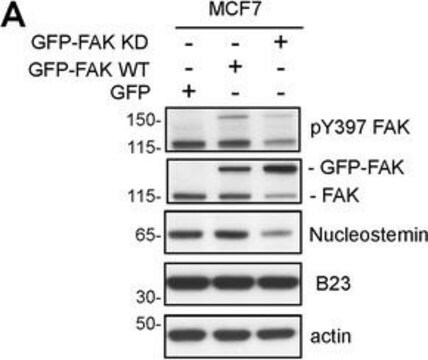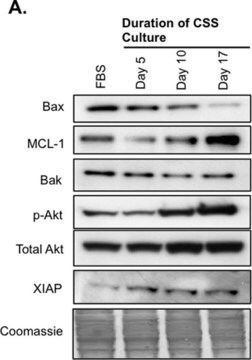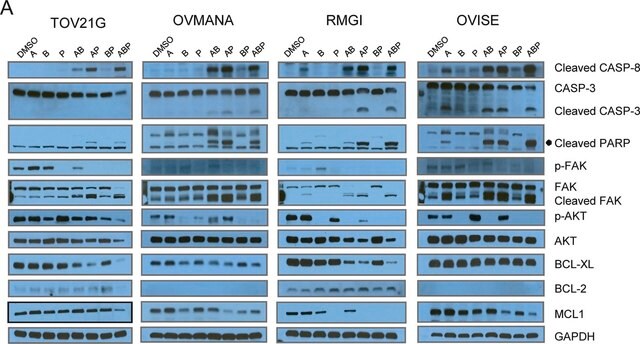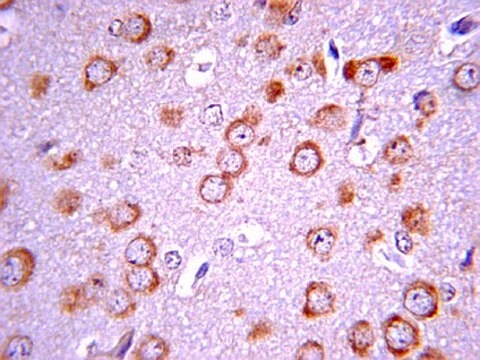05-1140
Anti-phospho-Focal Adhesion Kinase (Tyr397) Antibody, clone 18
clone 18, from mouse
Sinônimo(s):
FADK 1, PTK2 protein tyrosine kinase 2, Protein-tyrosine kinase 2, focal adhesion kinase 1
About This Item
Produtos recomendados
fonte biológica
mouse
Nível de qualidade
forma do anticorpo
purified immunoglobulin
tipo de produto de anticorpo
primary antibodies
clone
18, monoclonal
reatividade de espécies
mouse, human
técnica(s)
western blot: suitable
Isotipo
IgG1
nº de adesão UniProt
Condições de expedição
wet ice
modificação pós-traducional do alvo
phosphorylation (pTyr397)
Informações sobre genes
human ... PTK2(5747)
mouse ... Ptk2(14083)
Descrição geral
Especificidade
Imunogênio
Aplicação
Cell Structure
Cytoskeletal Signaling
Qualidade
Western Blot Analysis: 1:500 dilution of this lot detected phospho-FAK (Tyr397) on 10 ug of LPS treated RAW 264 lysates.
Descrição-alvo
Ligação
forma física
Armazenamento e estabilidade
Note: Variability in freezer temperatures below -20°C may cause glycerol containing solutions to become frozen during storage.
Nota de análise
LPS treated RAW 264 lysates.
Outras notas
Exoneração de responsabilidade
Não está encontrando o produto certo?
Experimente o nosso Ferramenta de seleção de produtos.
Código de classe de armazenamento
10 - Combustible liquids
Classe de risco de água (WGK)
WGK 2
Ponto de fulgor (°F)
Not applicable
Ponto de fulgor (°C)
Not applicable
Certificados de análise (COA)
Busque Certificados de análise (COA) digitando o Número do Lote do produto. Os números de lote e remessa podem ser encontrados no rótulo de um produto após a palavra “Lot” ou “Batch”.
Já possui este produto?
Encontre a documentação dos produtos que você adquiriu recentemente na biblioteca de documentos.
Nossa equipe de cientistas tem experiência em todas as áreas de pesquisa, incluindo Life Sciences, ciência de materiais, síntese química, cromatografia, química analítica e muitas outras.
Entre em contato com a assistência técnica








